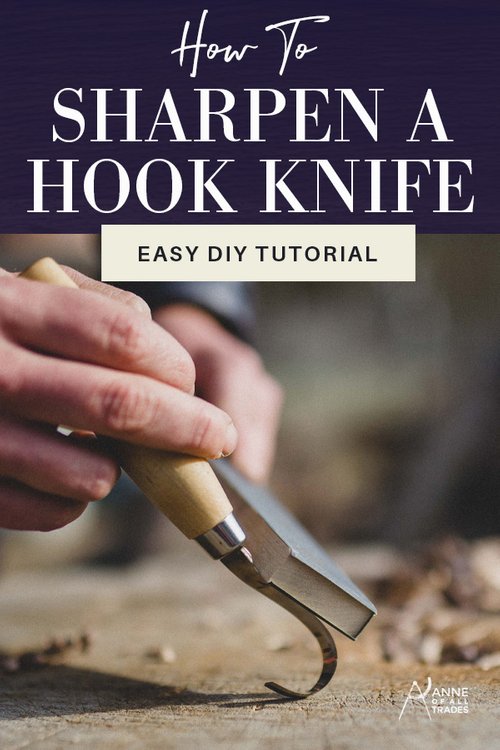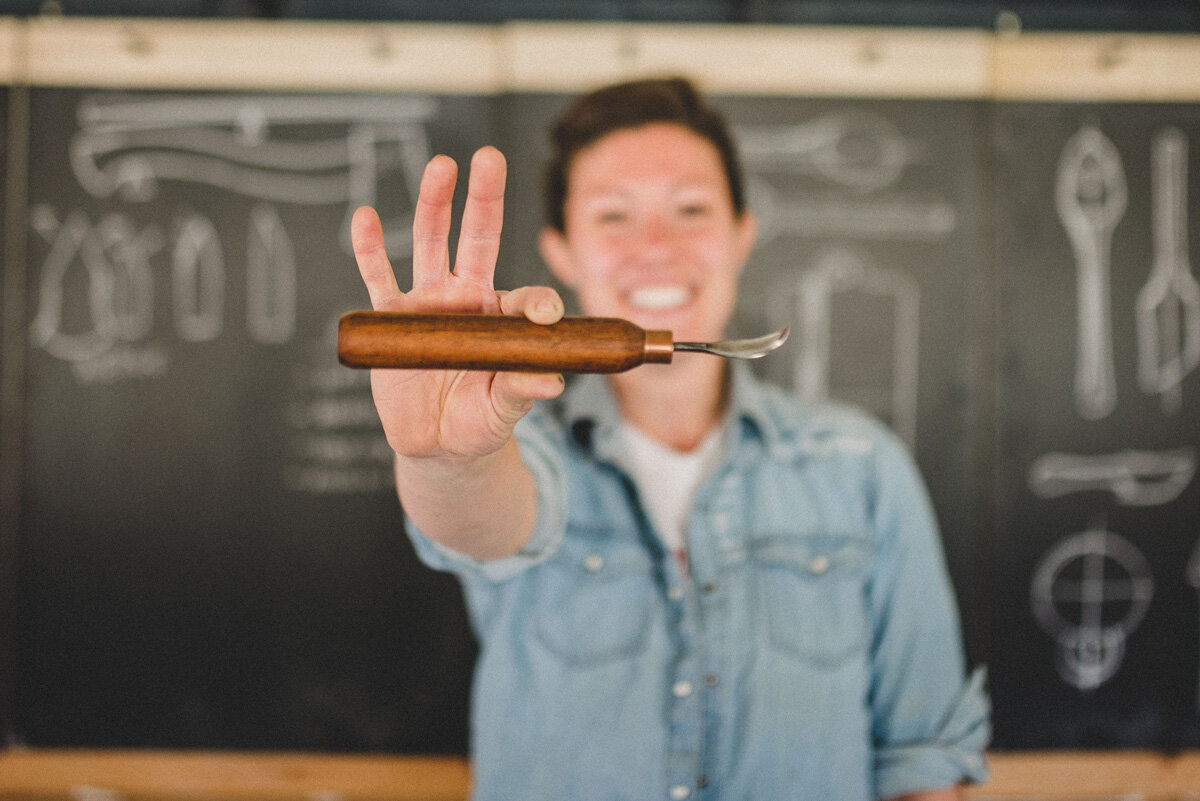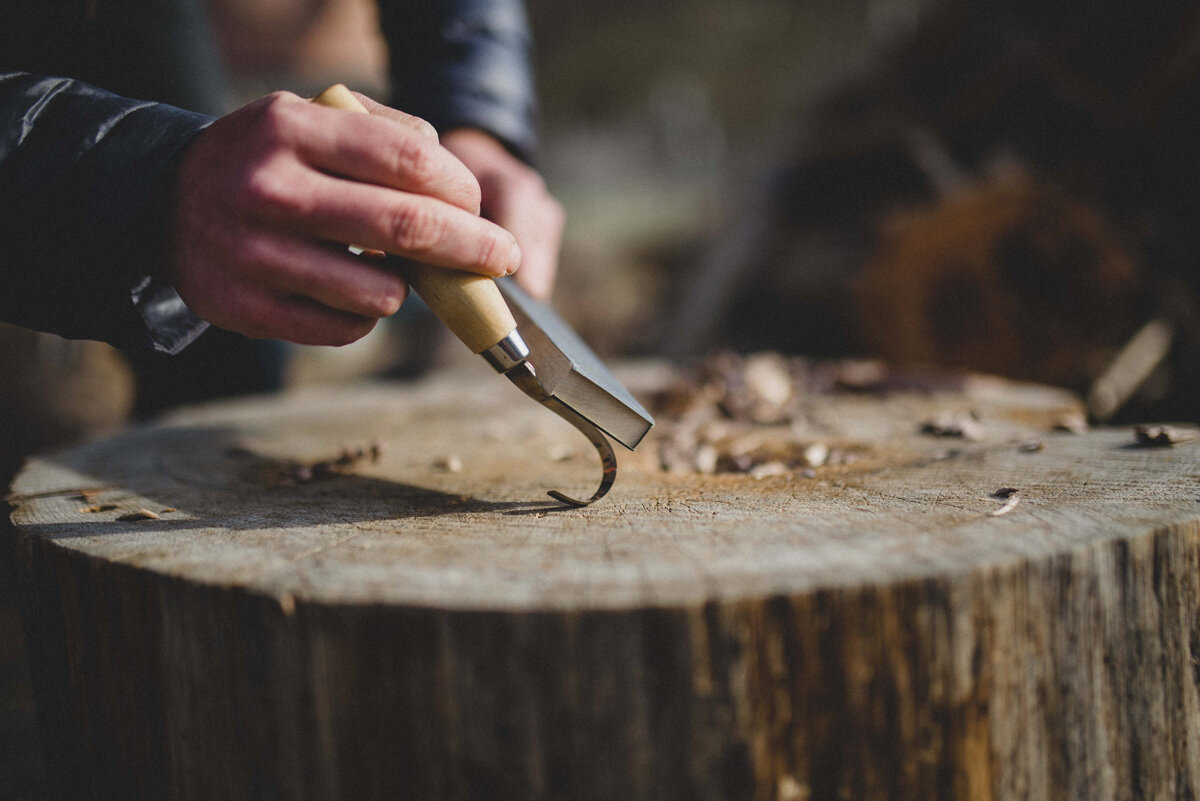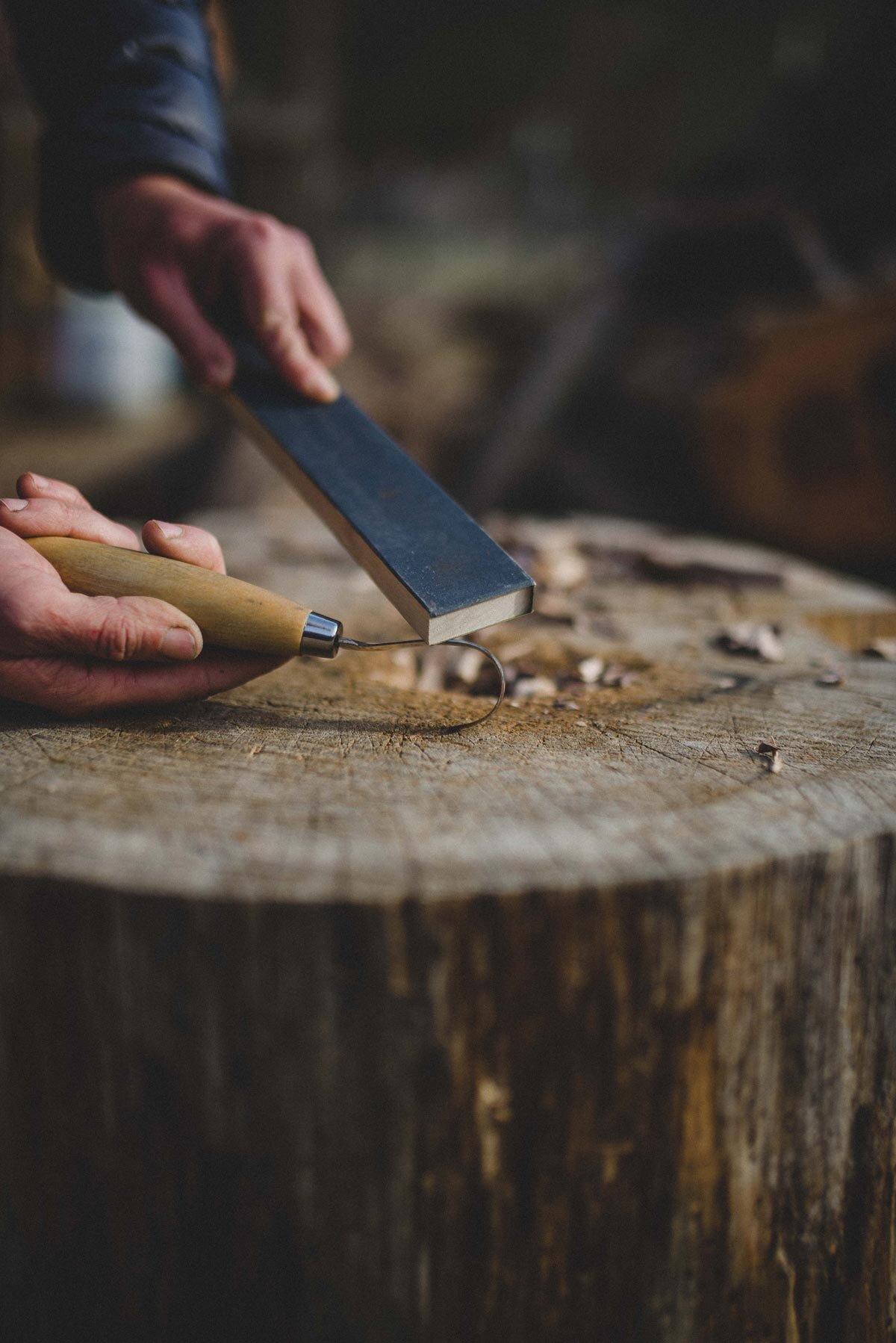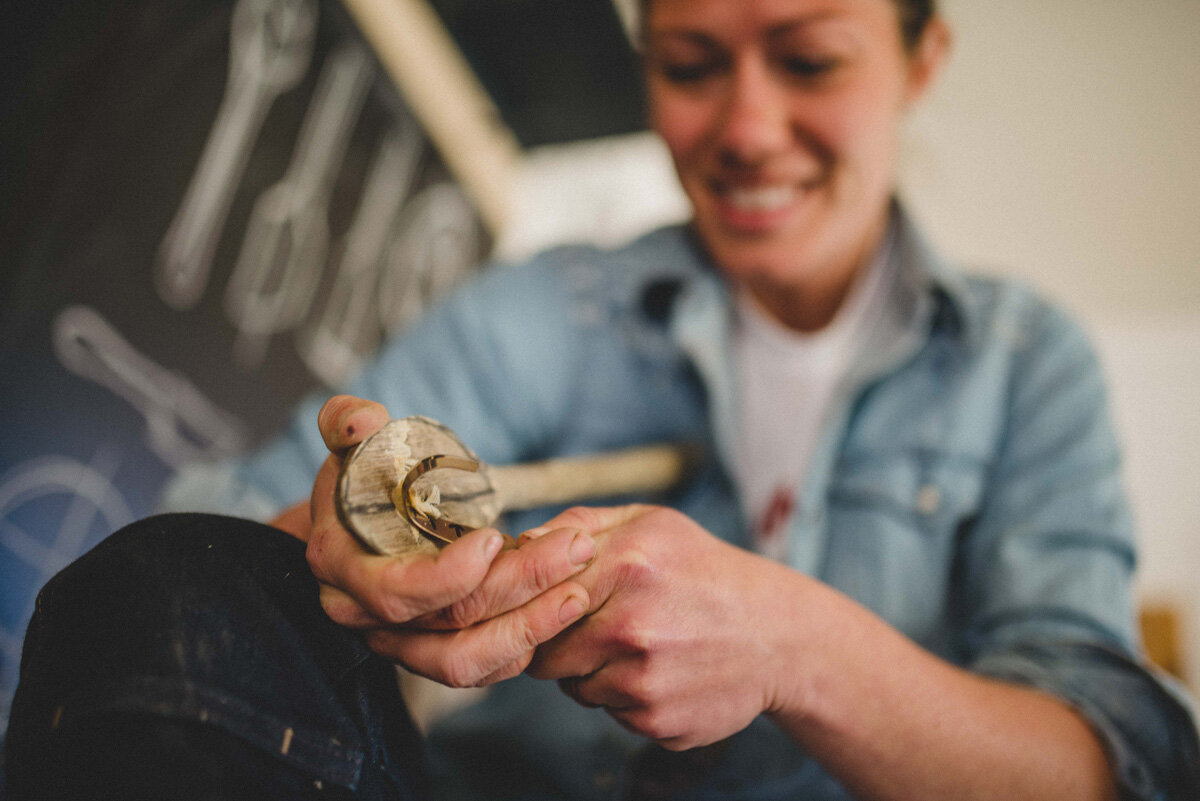How to Sharpen a Hook Knife
Learn how to properly sharpen a hook knife, including a step-by-step video tutorial, supplies needed and tips on how to always keep your tools sharp.
One of the most asked questions I get on my feed when I'm posting pictures of spoon carving (learn how to carve a wooden spoon here) is how to sharpen a hook knife. The first thing you need to understand to get a sharp blade is what actually makes a sharp blade.
When you're sharpening a blade, you're pushing a burr back and forth between two surfaces. As this burr gets pushed back and forth, and you reduce the grit of the sandpaper, your blade gets sharper.
A sharp carving knife is essential when it comes to carving spoons, that’s why it’s one of my tips in this post on 21 questions everyone wants to know about spoon carving.
How Often To Sharpen Tools
As a general rule with all my blades, whether it be chisels or plane blades, I sharpen every 15 minutes of use. That allows me to quickly touch up the edge instead of having to remove massive amounts of material.
The reason I like to use hook knives for carving is that there's actually a hollow in this portion of the knife. I've actually started making my own spoon knives lately (you can learn how to forge a spoon carving knife here), and I definitely adapted this trait.
Supplies Needed
Multiple wooden dowels
Various grit sandpaper (here’s the perfect sandpaper pack)
Spray adhesive (or staples)
Strop (and stropping paste)
Belt grinder - optional (here’s an inexpensive belt grinder)
In order to sharpen anything, you need to start with low grit sandpaper and you move up through the grits making that burr smaller and smaller the sharper it gets.
I have a series of little dowel sticks that I've made by stapling or gluing various grits of wet-dry sandpaper to them. You can staple them or glue them, it depends on how much of a hurry you're in.
You then graduate to a 1000 stone and you have this wire timber, you graduate to a 2000 or 4000 gritstone. That burr becomes even smaller and you're always sharpening the bevel and the back of the blade.
How to Sharpen a Hook Knife
Because the hook knife has a hollow grind, it’s very easy to sharpen because my sandpaper dowel is registering on two points. I just keep pushing forward along both points until I've raised a burr on the opposite edge.
All you're doing when you're sharpening a blade is you're pushing a burr or excess metal back and forth. I'm going to sharpen one edge until I can feel a burr on that side across the whole edge of the blade. And once I've got a burr, I just need to take that burr away, so I simply take my strop, and I really carefully move it along the edge.
I'm always working on the push stroke and I'm watching what I'm doing. I'm rotating the knife and pushing with the strop as I go.
If I was sharpening with a lower grade piece of sandpaper, and it wasn't a tiny little burr, if it was a bigger burr because I was removing a nick or something, then I would make a sandpaper strop to do the exact same thing.
sharpie tip
If you're worried that you're not doing it right, then grab a sharpie and blackout the entire edge of the hook knife. Then continue sharpening.
You can see when the sharpie is removed from the edge along the whole area of the blade, then you've covered the whole blade. Grab a higher grit and polish the edge a little bit more.
If you can feel a burr across the whole edge, grab the next highest grit sandpaper and do this again.
The higher the grit, the longer lasting your edge will be. You don't have to be too crazy about any of this, you can stop at about 600 grit and you should be good to go.
Sharpening a hook knife without a hollow grind
Say your hook knife doesn't have a hollow grind, such as the Mora knives I show in the video above. You can sharpen any other hook knife the same way as one with a hollow grind. But one problem with many hook knives is that they tend to come with a very steep bevel, which requires you to attack the spoon at such an extreme angle that you actually can't get a very high-quality cut if you can get a cut at all. This is especially difficult in dry woods and green woods.
You have a whole lot more flexibility, as far as what angles you can cut at and still get a fairly decent result. But basically, a Mora knife is really easy to fix if you have the time and patience, and a few tools to do it.
My Mora knives were sharpened very easily by using a belt grinder. Just take and grind that bevel back and blend it back into the blade so that it is easier to attack your spoon from a viable angle.
The reason why this angle is better is that it allows you to use the piece of wood as a support system so that you're not just trying to scoop out an enormous amount of material. As far as spoon carving goes, slow and steady is the name of the game.
Other Posts You May Enjoy
If you want to learn how to sharpen ANYTHING, check out our live class! Or check out these other posts below:

